Origin and History of Lake Grapevine, 1919-1953, Part 5: A Community Prepares and Construction Begins

As seen in Part 4, construction of the Grapevine Dam and Reservoir was initially scheduled to begin by late November 1947. Before that could happen, Grapevine’s leaders clearly stated that they did not intend to let their town become “a haven for honky-tonk operators, shanty dwellers or big-city gamblers” once the project was completed. Word was already circulating around town that big-time gambling interests and nightclub operators were eager to set up shop near the lakeshore and take advantage of Grapevine’s Main Street intersecting principal Highways 121 and 114, as well as the city’s proximity to Dallas and Fort Worth.
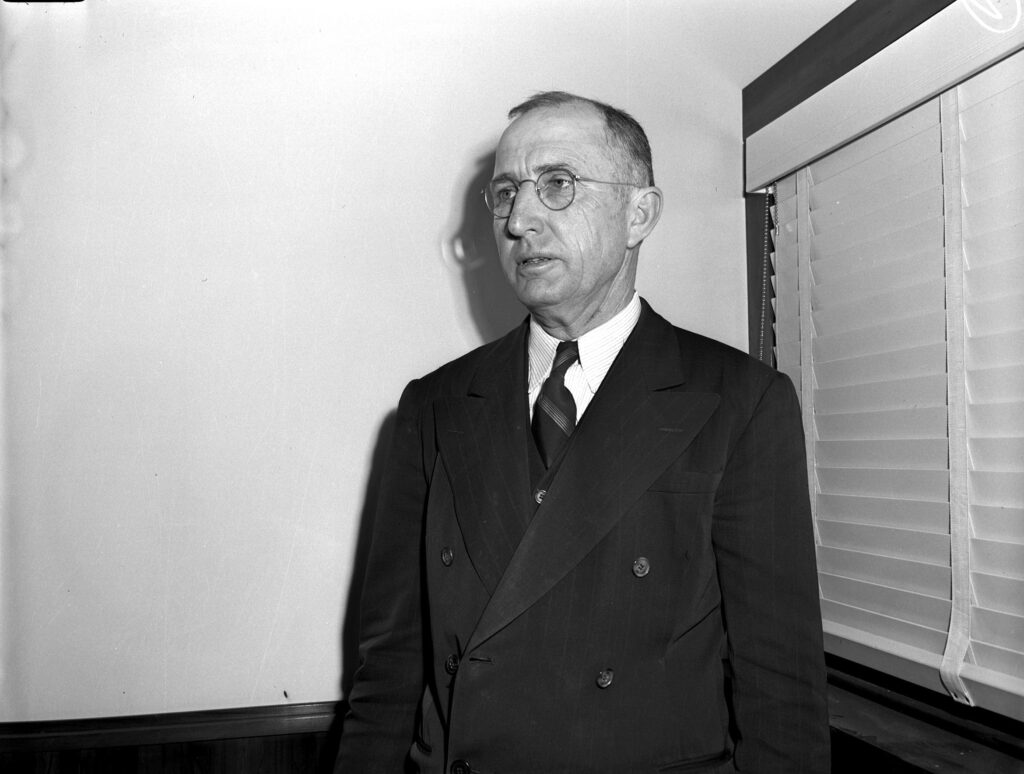
David E. Box, president of Grapevine’s First National Bank, assured the public that Dallas investors were welcome, but Grapevine wanted more of those who already had more than $5,000,000 dollars invested in estates and well-improved farm and ranches within ten miles of Grapevine. He asserted that the right kind of development would protect investments of some 200 business and professional men. The favoritism toward Dallasites stemmed from the fact that Dallas landholders outnumbered those of Fort Worth by twenty to one.
Some Grapevine property owners insisted that the “right kind” of residential construction by the lake should be done using brick, stone or tile as a prerequisite to land deals and to prevent all kinds of flimsy frame construction. Other locals, however, voiced concern for Grapevine residents already living in modest frame homes near the lake who would have to evacuate and find homes elsewhere. They claimed that frame homes in the area noticeably outnumbered the suggested homes. Those of modest means might be unable to buy other property for a small frame home if they chose to stay in the area because they didn’t have the money to build a finer home on the lake shore.
Optimism over Grapevine’s future generally ran high, but a few long-time residents like then-former Mayor B. R. Wall had serious concerns about the effect of lake water inundating thousands of acres of good bottom farm and pasture land on the local economy. Wall and his brother-in-law Robert E. Crews would soon have to relinquish their fifteen-acre dairy farm on Denton Creek to eminent domain. “I just hope,” he said, “that this expected lake shore development will take up all the slack.”
Engineering Supervisor Arrives
In mid-August 1947, Colonel Bernard L. Robinson, chief of the Galveston District of the Army Corps of Engineers (ACE), arrived in Dallas to supervise the construction of the Grapevine Dam. One his first duties was to arrange for the transfer of $500,000 from Dallas and the Park Cities to match a federal appropriation for the project. By mid-September, ground-breaking ceremonies for the dam had been set for December 1, and Grapevine residents immediately began preparations for the event.
On September 18, a group of recreation, Chamber of Commerce, and newspaper representatives from Dallas, Fort Worth, and other areas of North Texas flew to Arkansas on a three-day trip to observe recently developed recreation areas around two large Arkansas lakes. They planned to inspect those facilities with the view of developing the Grapevine, Benbrook, and Lavon reservoirs. Grapevine officials on the trip included Mayor Floyd Deacon and Representative Wingate Lucas. Mayor Deacon planned to ask Fort Worth, Dallas, Denton, Lewisville, and Arlington to participate in the ground-breaking ceremonies in December.
With local residents in mind, it was emphasized that ordinary citizens would have first call on lake recreational facilities. They would have free pedestrian access to all water except that in the immediate vicinity of the dam, but sites for private development set back from the shoreline would be available which would be controlled by the ACE. At the time, a recreational trend was in motion towards leases for private concessionaires operating boat docks and other lakeside facilities. However, recreation experts of the ACE stressed that non-profits (church groups, boys’ and girls’ clubs, etc.) able to render the largest benefit to the biggest portion of the population would get favorable attention.
Congressman Lucas announced that an organization to push development at the Grapevine and Benbrook lakes would be formed from leaders of Fort Worth, Arlington, Dallas, Grapevine, Denton, and Lewisville. Mayor Deacon, chairman of the organizing committee, said it would take three months to permanently organize this association, just in time for the start of development on the Grapevine and Lavon dams. Lucas also planned to request a federal fish hatchery for Lake Grapevine since there were none in any lake being developed in the Trinity Basin. “The Dallas-Fort Worth area,” he declared, “now has an opportunity to become one of the nation’s leading recreational centers.”
Evacuation Begins
On October 1, soil tests were taken in preparation for beginning actual construction on the project. The next day, farmers in the lowlands forming the basin for the Grapevine reservoir began evacuating their lands. Testings along the center line of the dam site a mile and a half northeast of Grapevine were being punched by a core drilling crew from the ACE’s Galveston office. A second drilling crew fanned out to make soil testings for gravel and sand to be used in construction.
One of the first sites given up in this area was the Simmons Brothers Dairy. Carl, Arthur, and Hugh Simmons opened their 2,000-acre business three and one-half miles north of Grapevine on Bushong Road about 1940. The incoming dam would crisscross their lawn, and most of their lush pastureland would go underwater. At 10:30 a.m. on October 16, 1947, Colonel George Apple, McKinney auctioneer, began selling off 414 Simmons dairy cattle, as well as dairy and farming equipment, to Texas and Oklahoma dairymen. All cattle were sold for a total of $50,000, and equipment for $10,000. It was a difficult time. Notices were placed in several North Texas newspapers, stating that the dam and reservoir were “forcing us out of business” and that the farm and dairy equipment and over 400 head of cattle “otherwise would not be for sale under any circumstances.” Arthur Simmons quipped that it would be the biggest auction ever held by a dam site. Carl Simmons asserted that abandoning the dairy would stop an average daily flow of 4,300 pounds of milk to the big Cabell Dairy in Dallas. Nonetheless, the brothers had no plans to re-enter the dairy business together. B. R. Wall noted wistfully in his diary the same day that “Simmons Brothers sold out their Dairy Cattle and Equipment at auction today ,, The first blow that the Grapevine Lake hands us.”

Fort Worth Star-Telegram, October 15, 1947, p. 4.
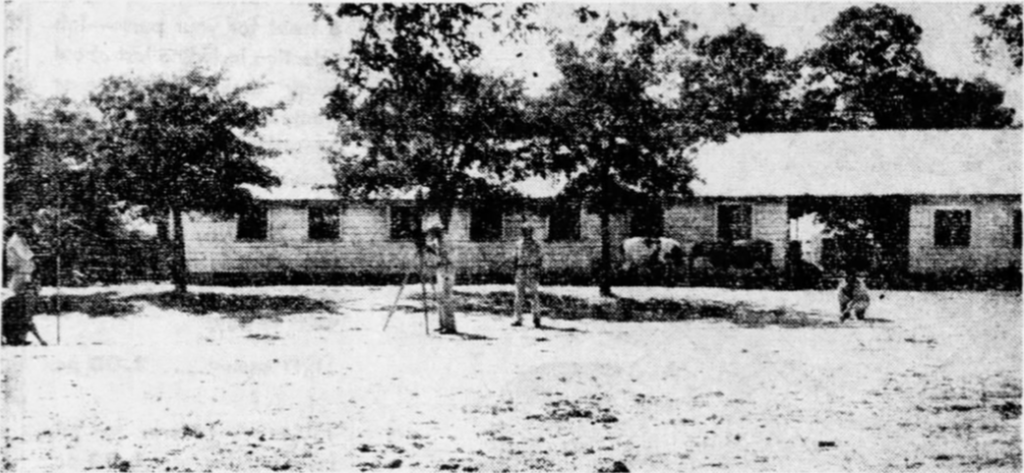
Fort Worth Star-Telegram, October 15, 1947, p. 4.
The Simmons brothers were one of fourteen landowners of 1,596 acres in the immediate work area of the reservoir who had to evacuate to allow preliminary construction when the contract was let. The largest tract, 439.5 acres, was owned by T. R. Jones. Other evacuees included the Jack Parkey dairy one mile north of the dam site, including 200 cows, as well as Robert Crews’s herd of one hundred head of cattle on his 155-acre farm, which would be largely submerged.
Drillers were taking six-inch cores in a twenty-five-acre Johnson grass meadow owned by T. R. Jones of Dallas. They continued along the center line of the dam site, which reached across landholdings of Thomas Y. Beckett, also of Dallas, and Frank T. Estill of Fort Worth. Drillers located the depth of the rock base for the dam as shallow as fifteen feet and as deep as fifty-two feet in initial drillings. These samples were sent to the ACE in Galveston for study by construction engineers. In a twist of irony, Arthur Simmons remembered that he had operated a core-drilling machine carried on a horse-drawn sled on the same site in 1921 when Dallas first considered Denton Creek as a reservoir site. The city eventually abandoned it for the site that later became Lake Dallas.
In the meantime, the real estate boom in and near Grapevine was tempered by many prospective buyers being in doubt as to where they wanted to buy because the lake’s waterline had not yet been defined. Retaining a strip around the lake for public use regardless of adjacent buildings offshore also deterred some land sales. Nevertheless, four new subdivisions were planned, two east of town in the direction of the dam site, and most of the 150 Dallas residents owning property in the Grapevine area seemed content that they were getting a “government lake” to enhance recreation possibilities of their country homes.
Eminent Domain Is Authorized
On October 29, 1947, the ACE finally broke its silence regarding land-buying. It stated that only a limited amount of acreage – 1,975.6 acres at Grapevine – would be sought by eminent domain. Work on both ends of the dam called for land purchases from fifteen owners: T. R. Jones, 227 acres; T. G. Beckett, 514; Mrs. Birdie Brown, sixty-four; Frank T. Estill, 334; Mary Flake, eighty-three; C. K. Simmons, twenty-five; Mrs. F. W. Wiegers, 160; R. F. Mullins, fourteen; B. R. Mullins, nineteen; W. V. Griffis, forty; Mrs. Effie James, seven; Mrs. R. J. Robinson, 379, C. R. Brown, .6 of an acre; T. R. Jones, Inc., one hundred acres; and H. E. Saunders and T. R. Jones, nine acres. ACE land appraisals had to be approved by the Southwestern Division office in Dallas and the chief of engineers in Washington before negotiations with owners could begin.
John M. Fouts, general manager of the Trinity Improvement Association (TIA), announced on November 1 that ground-breaking ceremonies on the Grapevine site would be held at 3:30 p.m. on December 5. After the program, Grapevine and TIA businessmen would host a barbecue at the site or at Grapevine High School if the weather was inclement. Mayor Deacon would preside, and banker David Box would be in charge of arrangements for Grapevine. Four days later, on November 5, US District Attorney Frank Potter filed a condemnation suit with Federal Judge Joe B. Dooley in Federal District Court against 1,976 acres (sixteen tracts), most of it in Tarrant County, in order to speed the project.
Although a federal judge authorized immediate condemnation proceedings on November 5, it had been a fixed policy of the ACE to first negotiate with landowners and avoid condemnation whenever possible. However, the length of time required for the appraisal work and for negotiations did not permit the usual procedure without delaying the start of construction. But that did not mean that property owners’ rights were jeopardized. Once appraisals were completed, the federal government would begin negotiations in order to reach an amicable agreement on sale prices. If successful, condemnation proceedings would cease.
An unsatisfied owner could appeal to a board of commissioners appointed by the federal court. Based on the evidence of values by the government and landowners, the commissioners would make their award. If the owner refused to accept that decision, he or she could ask for a trial in the federal court in which the judge and jury would decide the matter of compensation. If the landowner refused to negotiate based on appraisal, a Declaration of Taking would immediately be filed, and estimated just compensation would be deposited into the registry of the federal court, and the owner could apply to withdraw up to the amount deposited without prejudice to his or her right to claim additional compensation. It was also possible to negotiate even after the filing of a Declaration of Taking.
“It is unfortunate,” Colonel Robinson said, “in any great public development like the Grapevine Dam may cause some dislocations for certain individuals but this cannot be avoided.” It was a matter of greater benefits for the greater number of people but would not result in unjust compensation to landowners along Denton Creek.
Grapevine And J. W. Mosley Prepare For Ground-Breaking
The Grapevine Promotion Committee (GPC) organization was suggested by Grapevine Congressman Wingate Lucas and Mayor Floyd Deacon to steer the city’s course in the wake of a boom following the completion of the dam and reservoir. On November 8, the GPC, headed by David Box, was chosen to represent the city in its various civic and commercial developments. Members included K. B. Moore, Ted Willhoite, Gordon Tate, L. W. Parker, Jr., L. M. Chaffin, Rudy Rutland, J. Bert Perry, and Roy Chambers. Its first and major project was the ground-breaking ceremony for the dam and reservoir at the north end of the dam site. The barbecue following it required tickets for admission at one dollar each. The GPC was in charge of Grapevine’s participation in the ceremony, and special committees on publicity, street decorations, food, and grounds arrangement, were appointed. All Grapevine businessmen were invited to assist so the occasion would “reflect proper credit to our community.”
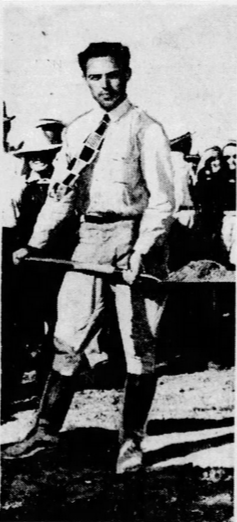
Fort Worth Star-Telegram,
June 13, 1947.
Bids for the earth embankment, access roads, and sand and gravel work were opened in Galveston on November 17. J. W. Mosley of Garland submitted the lowest bid of $866,126 for the first construction on the project, which was likely to start by the third week in December 1947. Mosley was finishing up at Benbrook and would have about one week to move his equipment to the site and get started. The $12,000,000 project was expected to take about three years to complete. On November 18, the City of Dallas mailed its $500,000 advance payment on construction to Colonel Robinson, ACE district engineer at Galveston. He received the Park Cities check on November 17.
Contractor Mosley, who soon after moved to Fort Worth, had his 600-day job cut out for him. After bringing his equipment from the nearly-complete job at Benbrook Dam, his tasks at Grapevine would include:
- Clearing 117 acres
- Grubbing eighty acres
- Moving 59,700 cubic yards of earth for excavation stripping
- Excavation of 184,000 cubic yards of earth for the embankment foundation
- Common excavation of 515,200 cubic yards of earth
- Excavation of approximately 6,100 cubic yards of rock
- Moving 32,100 “squares” for foundation preparation
- Moving 5,092,000 cubic yards of earth from “borrow” excavation sites in area below the dam
- Embankment fill of 3,169,000 cubic yards
- Drainage blanket fill of 67,700 cubic yards
- 4,700 roller hours of additional compaction
- Moving and placing 13,300 cubic yards of topsoil
- Moving and spreading of 120 cubic yards of gravel for road surfacing on top of the dam.
Tickets to the post-ground-breaking ceremony barbecue, which would start at 5 p.m. on December 5, went on sale on November 22 at City Drug Store, J. A. Spinks Drug Store, Tate Grocery, J. E. Foust & Son, Cate Grocery, Graham’s Grocery, Yates Grocery, Trigg Grocery, and the First National Bank, and sold at a good clip. Some residents bought as many as thirty-five tickets. GPC chair David Box observed that since the low bidder was announced, interest in the project had significantly risen; at least 1,000 people were expected to be at the program, and 600 at the barbecue, which would also include hot coffee and bonfires.
David Box had spent November 26 giving a tour of the dam site for army engineers and newspaper writers from Fort Worth and Dallas. Like Arthur Simmons, Box had memories of the area from 1921. While looking over the Denton Creek valley from a high bluff in late November, he recalled that “Right here, on this spot, we had a barbecue in September 1921 to celebrate the beginning of construction of a reservoir on Denton Creek.” From his vantage point, he could see a windmill to the northward where the present planned barbecue would take place on December 5. John J. Russell, chief of reservoir utilization for the Southwestern Division of the ACE, gave a preview of the lake’s recreation possibilities. Twenty-six years later, the dream of a dam and reservoir on Denton Creek was finally coming true.
The Big Day Arrives

December 6, 1947, p. 1.
On December 2, the ACE marked the auto route from Highway 114 to the dam site with signs and flags. Amidst the flurry of activity, James A. Cotton, engineer in charge of the Fort Worth District sub-office of the Galveston District, informed prospective lakeside land buyers on December 3 that it would be at least a year – even eighteen months – before the ACE defined its “taking line” for the lake’s basin, which was the rim of all lands to be acquired for the reservoir. They would include a strip around the completed lake waters, which would be kept open permanently for the public. Based on engineering studies, Cotton said that the maximum potential flood line was nearing 581 feet above sea level, so lands at that elevation could probably be safely bought without government acquisition. His office was inundated with calls from hopeful purchasers of lakefront property.
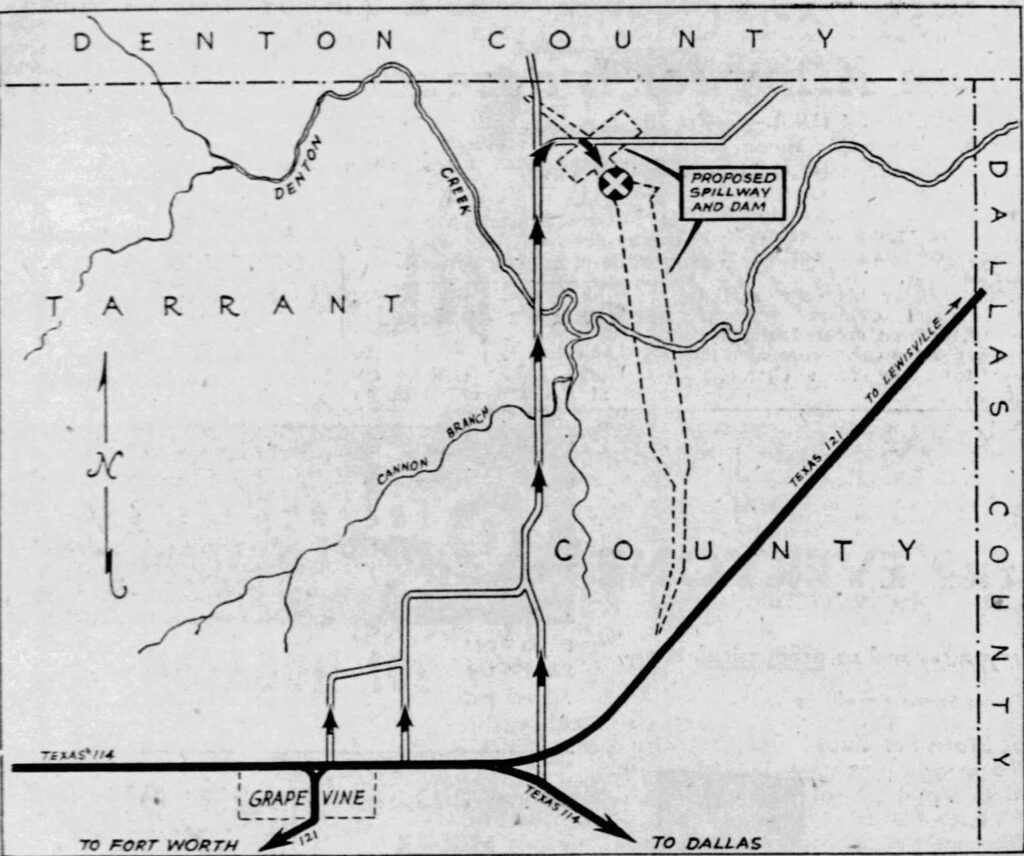
Fort Worth Star-Telegram, December 4, 1947.
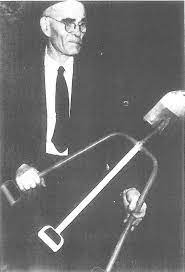
After the ground-breaking, J. W. Mosley sent two large earth-moving machines into the center of the ground-breaking spot, where they scooped dirt by the yard. With machinery on the ground, actual construction would be started as soon as the awarding of a contract was approved by the ACE. Responsibility for the actual field work in connection with the dam was under the purview of James Cotton of the Fort Worth sub-office. John J. Russell was the resident engineer controlling activities at the dam site. Russell’s field office was located on the T. R. Jones farm tract. Wingate Lucas provided his Grapevine home to Russell while he was in residence at the dam site.
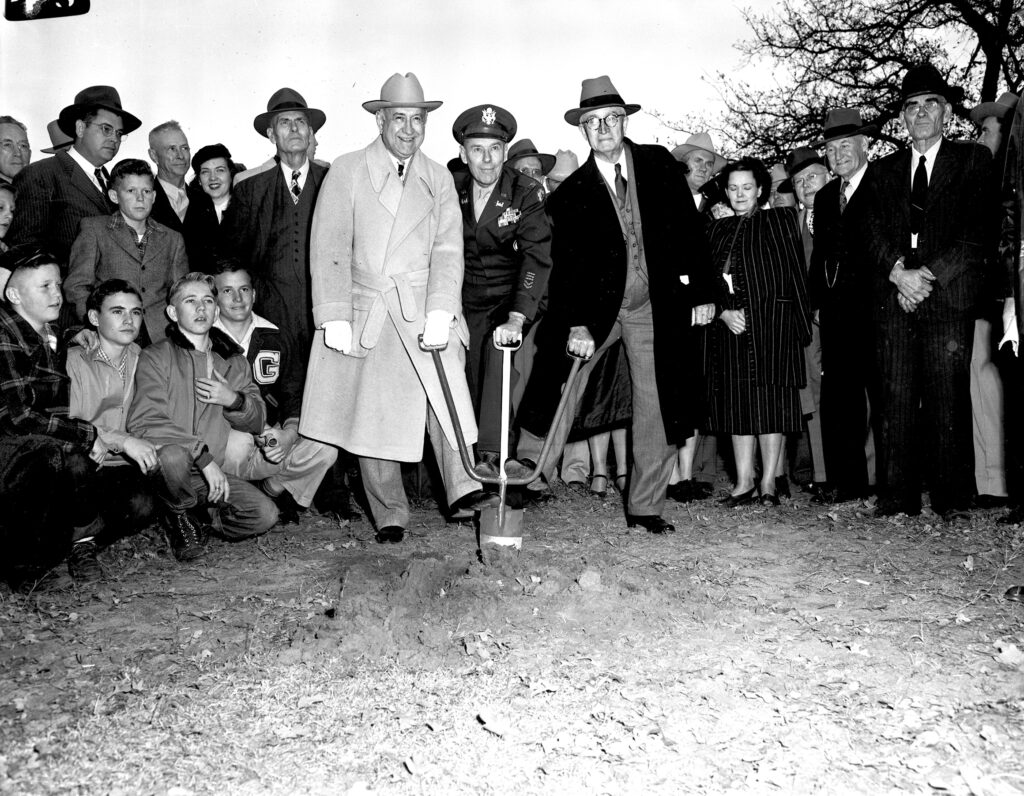
Mayor Floyd Deacon opened the formal program by expressing his appreciation on behalf of Grapevine, followed by John Carpenter, who explained the benefits of the project. Some good-natured rivalry between Fort Worth and Dallas made its way into the ceremony when he said the audience had met “a little on Amon Carter’s side,” but he also reiterated that “it was a great day when the two cities can work together on this program.” Carter, chairman of the TIA, responded in kind when he said: “that this is the first time Dallas has ever contributed money to build something in Tarrant County.” Carter also praised past and present Texas congressmen, as well as John Fouts, for their hard work in making the Trinity River project in general, and the Grapevine project in particular, a reality. The principal speech was given by Southwest Division engineer Colonel Henry Hutchings, in which he praised the TIA’s teamwork as an example of outstanding cooperation for the common good and detailed the steps taken by the ACE to proceed with Upper Trinity improvements under authority of Congress.

Fort Worth Star-Telegram, December 5, 1947.

Fort Worth Star-Telegram, December 6, 1947, p. 2.
Two visions were at work regarding the dam and reservoir project, both aligned with future growth, one local and one with a broader scope. Grapevine’s First National Bank foresaw many more people taking part in the project who should be made to feel at home in a community that welcomed and appreciated them and said it was ready to provide banking services to new as well as permanent residents. The Dallas Morning News reminded its readers that this accomplishment was “a challenge for pressing toward the really big achievement (the entire Trinity River watershed program for water and soil conservation),” of which “the Grapevine Reservoir is only a small part.”
As the News stated, this was one of a number of projects in the overall scheme of the Trinity River program. Now that it was underway, its ramifications began to be felt throughout the Grapevine community. In the next blog, we will get up close and personal with local residents to understand how a federal water and soil project impacted a local population.


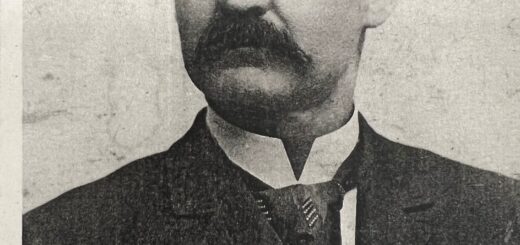

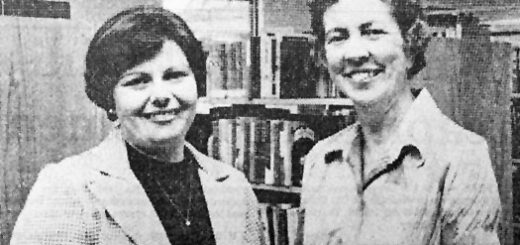
Recent Comments